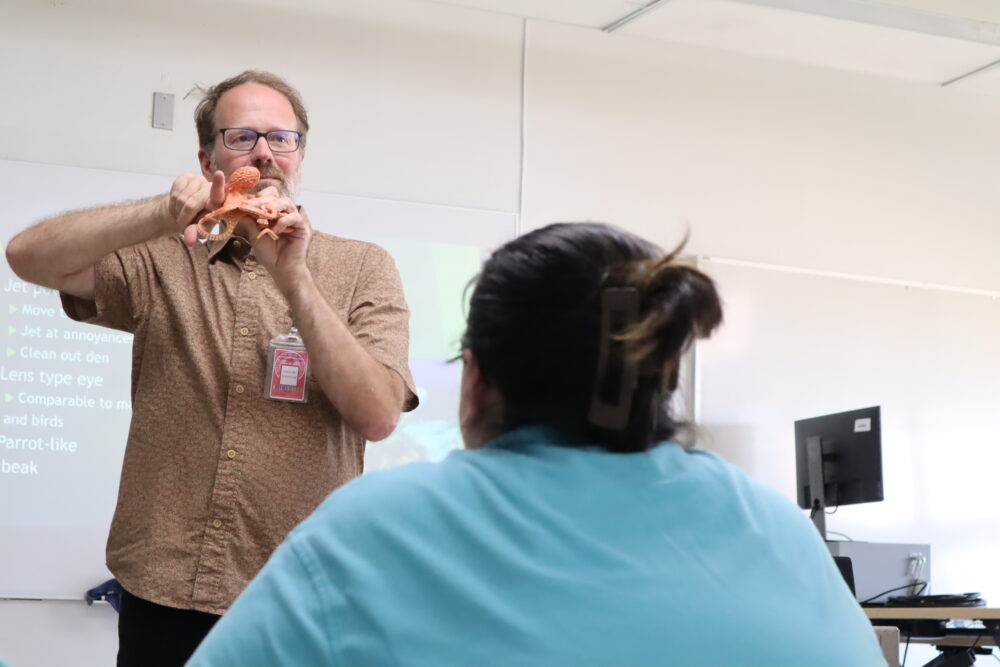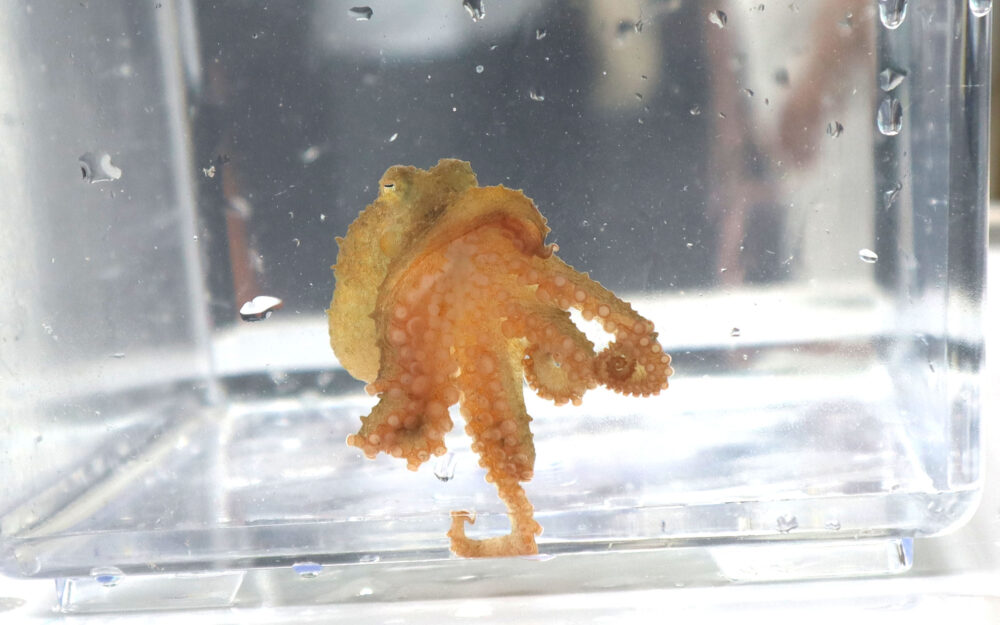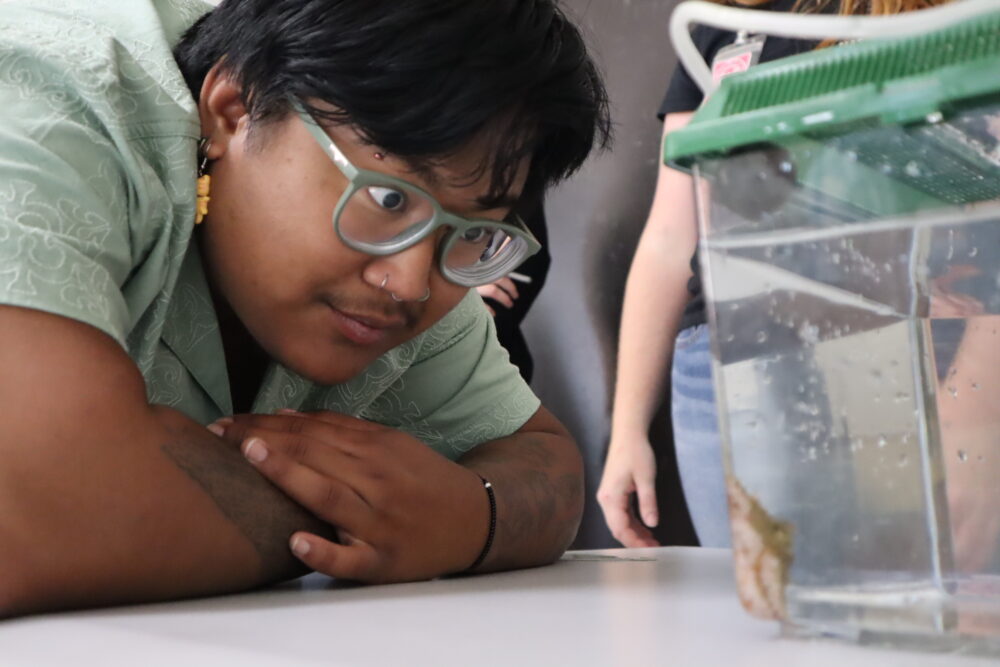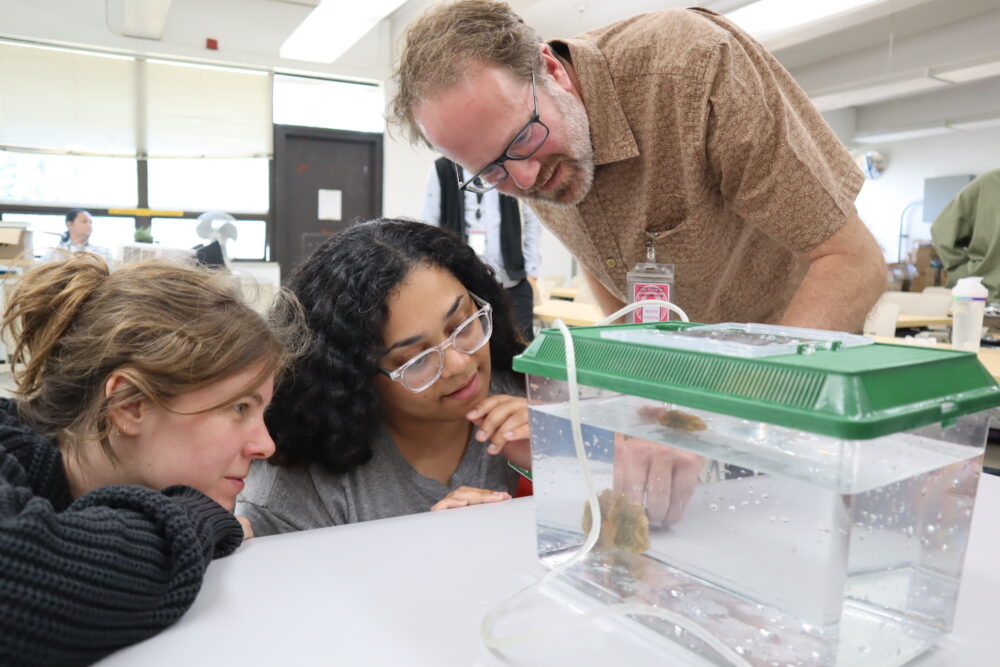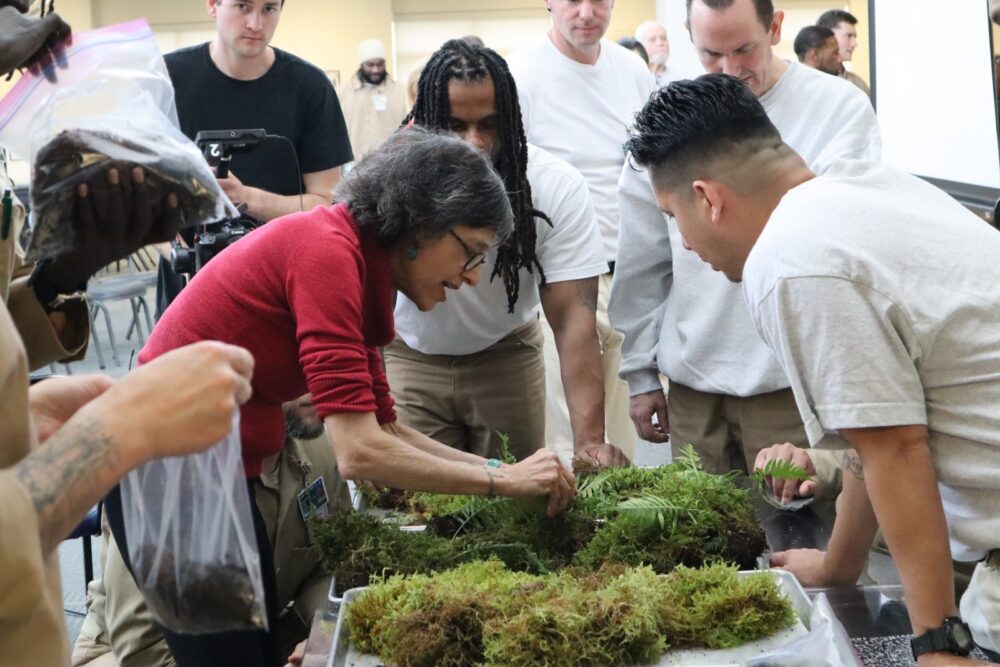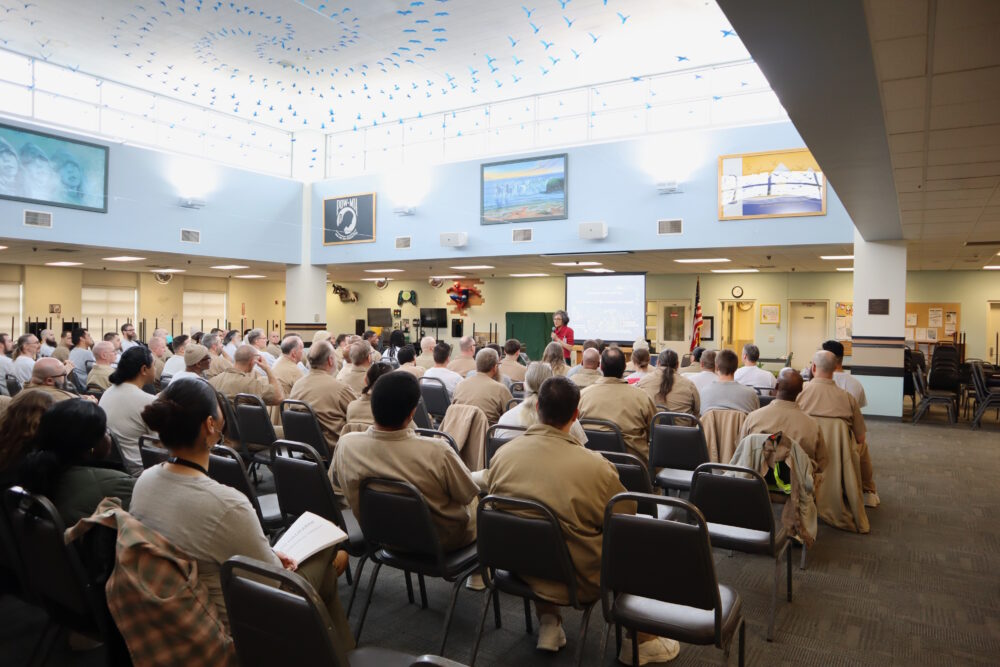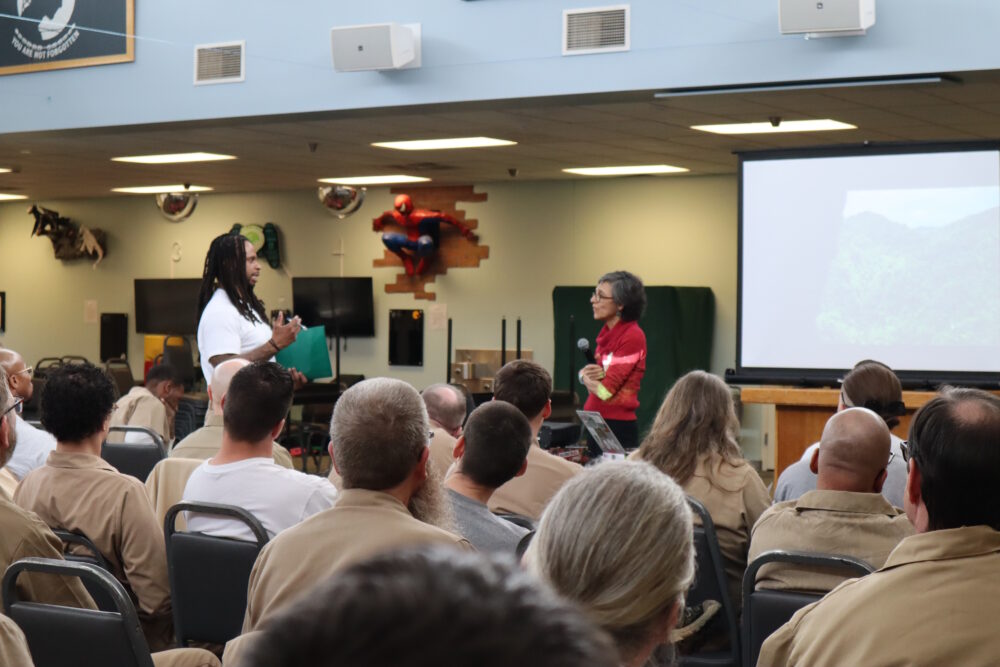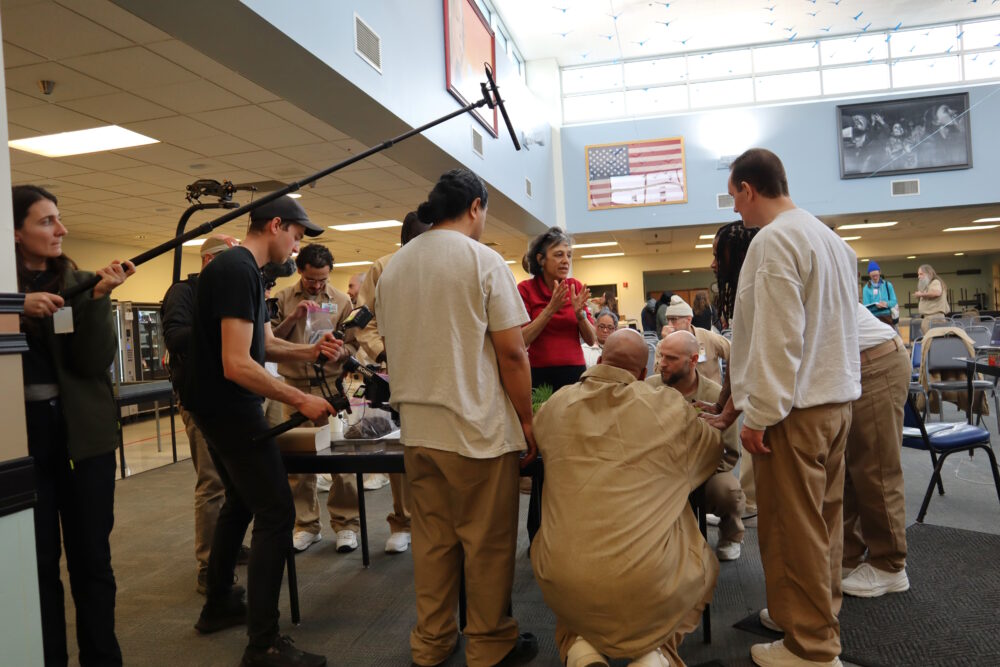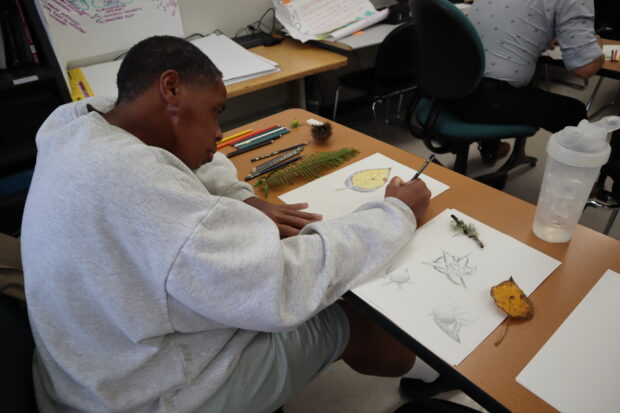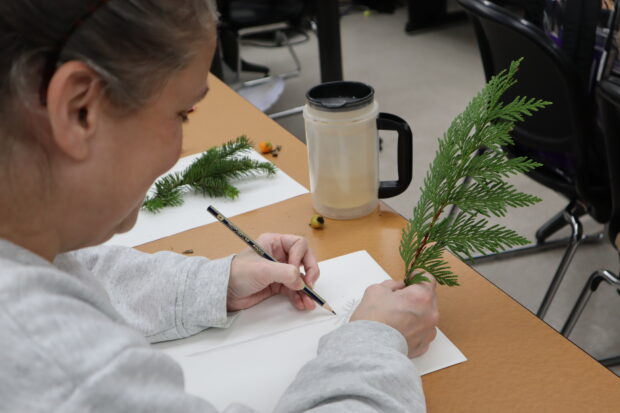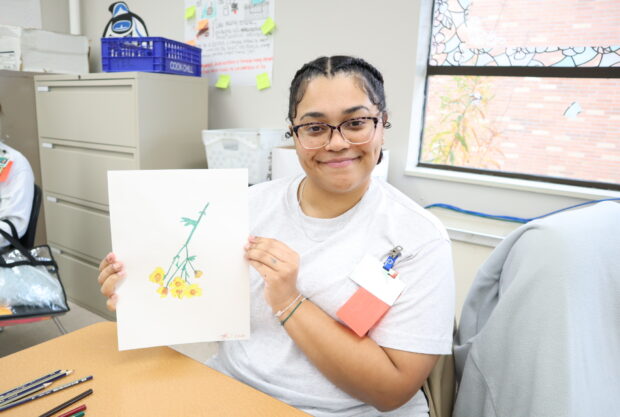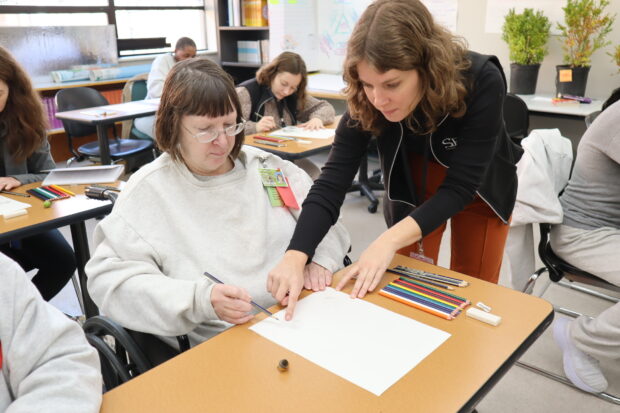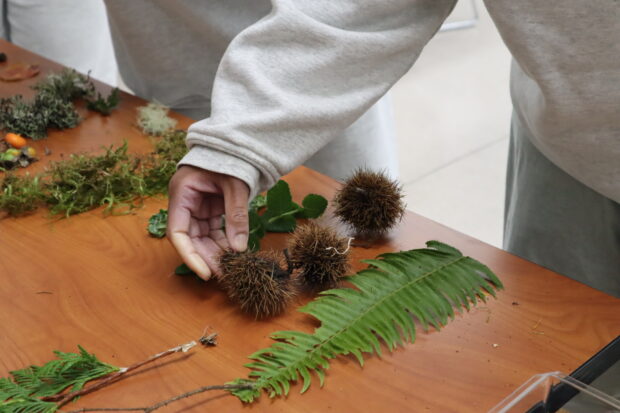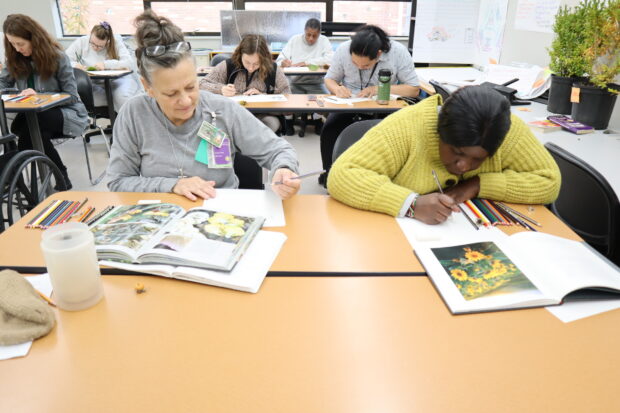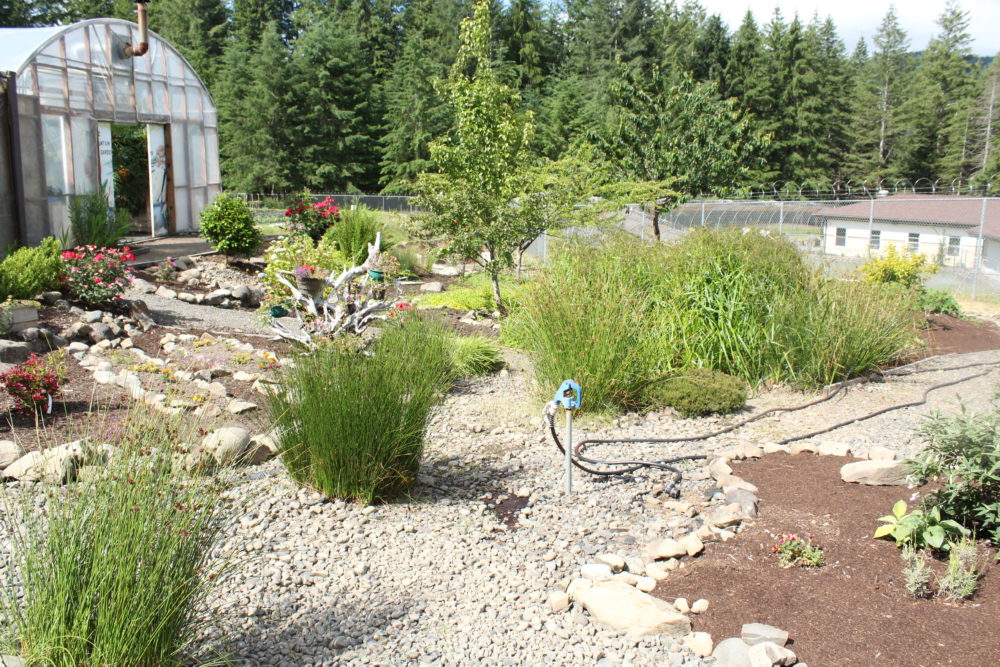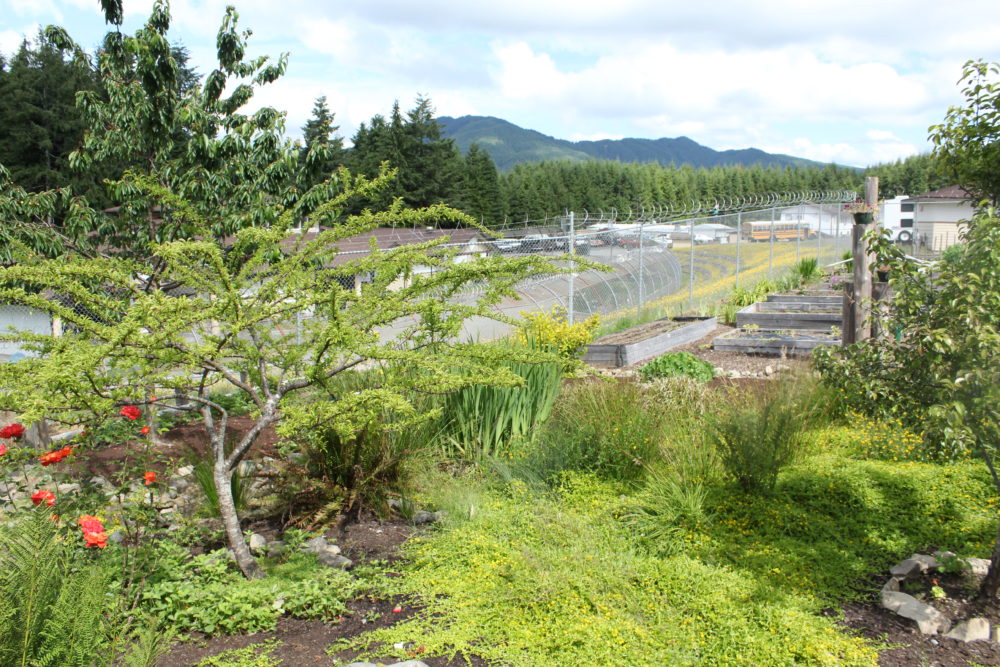By Paul Thorsteinson, Apprentice Level Beekeeper
On October 7th, 2025 the unthinkable happened. In a video conference made possible by Microsoft Teams, three separate prisons connected from different sides of the world. This meeting was the first of its kind. It consisted of two Norwegian Prisons and Stafford Creek Corrections Center in Aberdeen, Washington. The conservation that ensued was the defining aspect of what made this global connection unique. They didn’t connect to talk about criminal justice. They didn’t talk about prison cells or chow hall meals. They connected to talk about bees.

SPP Beekeeper Paul Thorsteinson poses with the SCCC apiary. Photo by Emily Passarelli.
The prisoners from Stafford Creek shared a presentation about their facility’s growing apiary and the benefits of sustainable practices learned in prisons. They talk about how bees are a necessary component to ecological survival and how if bees disappeared, the entire world’s agricultural system would collapse within just four years. They shared the benefits of honey being a pure food source that never spoils. One of the most compelling examples was pots of honey found in Egyptian tombs that were still edible even after thousands of years in storage.
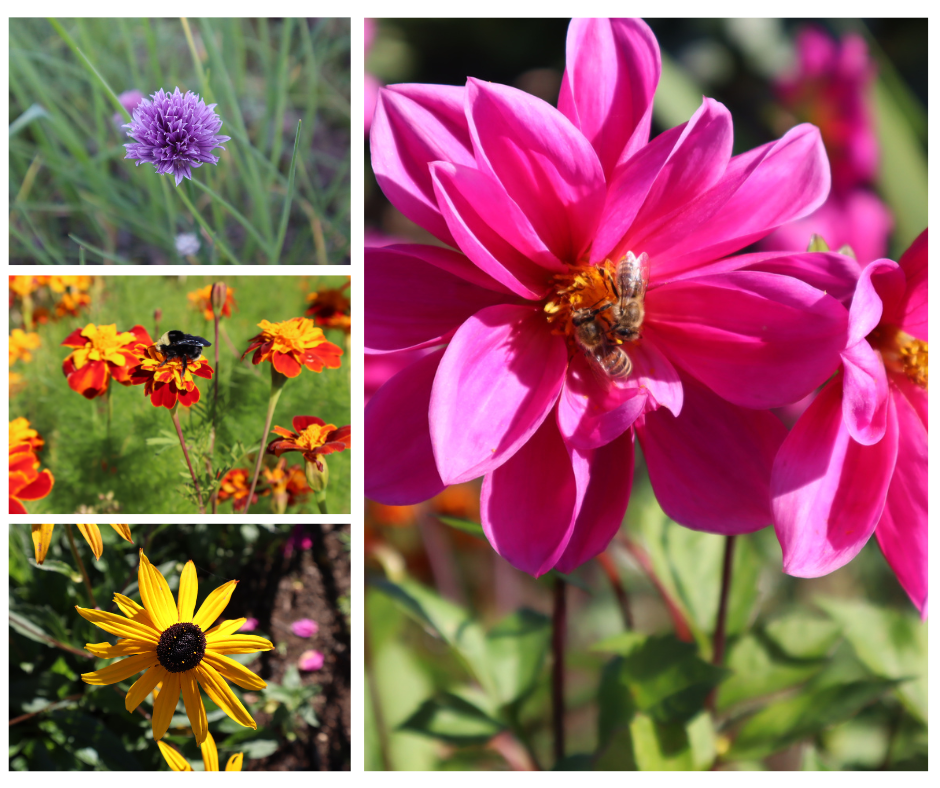
Stafford Creek’s apiary is full of color and life. Photo by Emily Passarelli.
The Stafford Creek beekeepers went on to share with the Norwegians the different bee products they were able to make at their facility. All of the items were made from resources that were harvested directly from their local apiary. They called their process Bee Alchemy. The products ranged from candles, beard balm, lip balm, and even a few gallons of honey. All of these items made at Stafford Creek are donated back to the community.
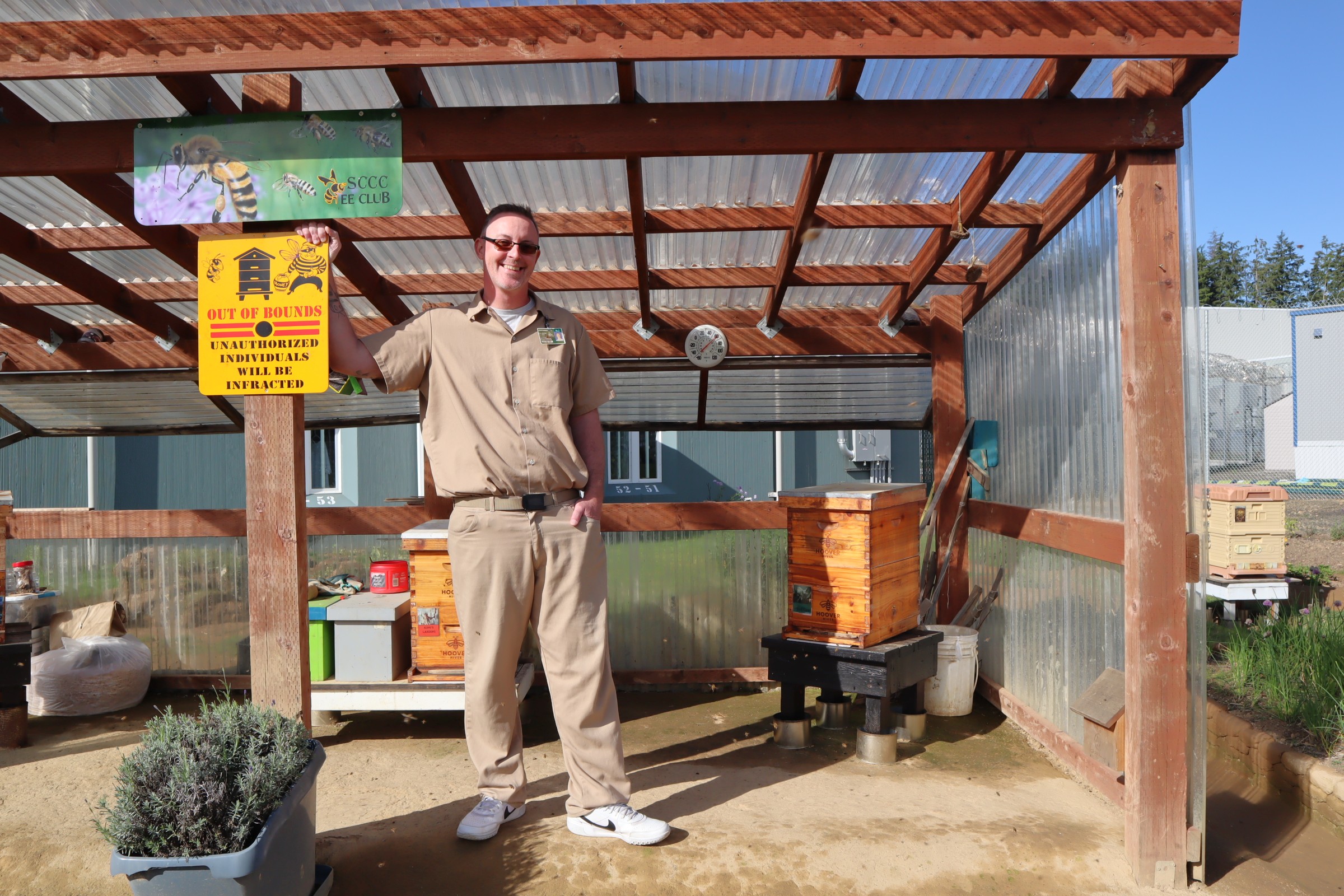
Paul poses with the hive he’s responsible for as a prospective journeyman beekeeper. Photo by Emily Passarelli.
One incarcerated presenter even shared his entire testimony fully dressed in a white beekeeper’s suit. After sharing a short video of Stafford Creek’s hives, he described the overwintering practices and the necessary activities needed to improve the bees’ chances of survival during the cold, wet winter months.
The international presentation of bees to multiple incarcerated community was the first of its kind. It had never been done before. Sustainability has never been discussed by incarcerated people from different parts of the world. All of this was made possible through a new Washington Way initiative called Cell-2-Cell. It is a fully interactive connective platform that unites incarcerated people on different sides of the world so that they can share their life experiences and culture. Starting just two years ago, Cell-2-Cell is realizing its revolutionary potential to connect communities, talk about bees, and change the world.
